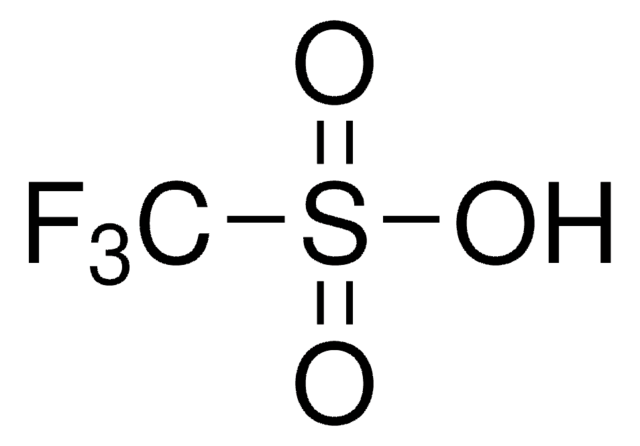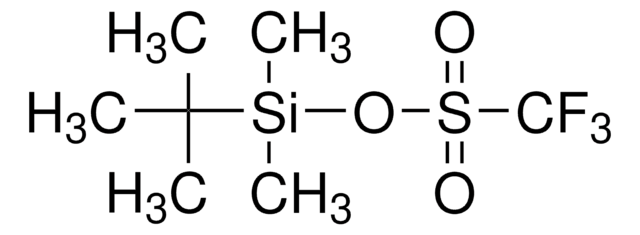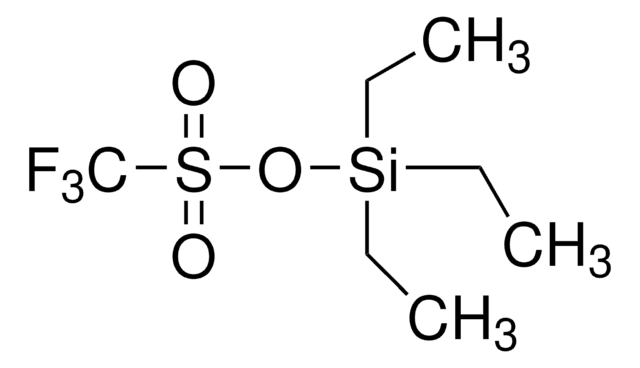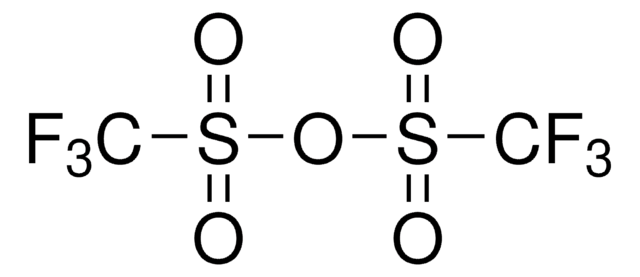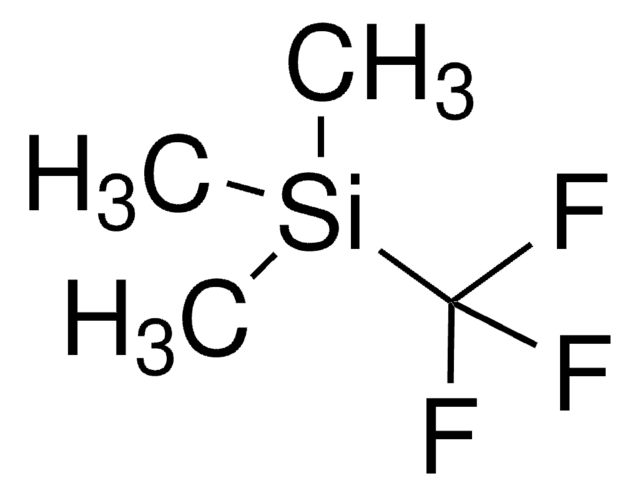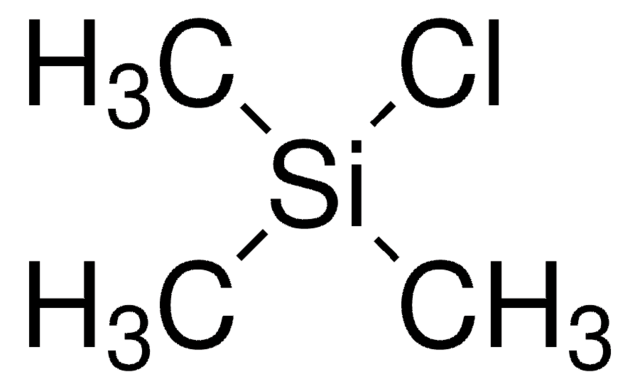Kluczowe dokumenty
225649
Trimethylsilyl trifluoromethanesulfonate
99%
Synonim(y):
TMS triflate, TMSOTf, Trifluoromethanesulfonic acid trimethylsilylester
About This Item
Polecane produkty
Poziom jakości
Próba
99%
Formularz
liquid
współczynnik refrakcji
n20/D 1.36 (lit.)
bp
77 °C/80 mmHg (lit.)
gęstość
1.228 g/mL at 25 °C (lit.)
grupa funkcyjna
fluoro
triflate
ciąg SMILES
C[Si](C)(C)OS(=O)(=O)C(F)(F)F
InChI
1S/C4H9F3O3SSi/c1-12(2,3)10-11(8,9)4(5,6)7/h1-3H3
Klucz InChI
FTVLMFQEYACZNP-UHFFFAOYSA-N
Szukasz podobnych produktów? Odwiedź Przewodnik dotyczący porównywania produktów
Zastosowanie
It can be used:
- As a silylating agent for the synthesis of trimethylsilyl-enol ethers from esters of α-diazoacetoacetic acid.
- To activate benzyl and allyl ethers for the alkylation of sulfides.
- To facilitate the conversion of Diels-Alder adducts of Danishefsky′s diene to cyclohexenones without the formation of methoxy ketone by-product.
- To prepare difluoroboron triflate etherate, a powerful Lewis acid especially in acetonitrile solvent.
- As a reagent in a Dieckmann-like cyclization of ester-imides and diesters.
It may also be used to catalyze:
- Acylation of alcohols with acid anhydrides.
- Reductive coupling of carbonyl compounds with trialkylsilanes to form symmetrical ethers.
- Glycosidation of 4-demethoxydaunomycinones with 1-O-acyl-L-daunosamine derivatives.
wyposażenie dodatkowe
Hasło ostrzegawcze
Danger
Zwroty wskazujące rodzaj zagrożenia
Zwroty wskazujące środki ostrożności
Klasyfikacja zagrożeń
Flam. Liq. 3 - Skin Corr. 1B
Zagrożenia dodatkowe
Kod klasy składowania
3 - Flammable liquids
Klasa zagrożenia wodnego (WGK)
WGK 3
Temperatura zapłonu (°F)
77.0 °F - closed cup
Temperatura zapłonu (°C)
25 °C - closed cup
Środki ochrony indywidualnej
Faceshields, Gloves, Goggles, type ABEK (EN14387) respirator filter
Wybierz jedną z najnowszych wersji:
Masz już ten produkt?
Dokumenty związane z niedawno zakupionymi produktami zostały zamieszczone w Bibliotece dokumentów.
Klienci oglądali również te produkty
Nasz zespół naukowców ma doświadczenie we wszystkich obszarach badań, w tym w naukach przyrodniczych, materiałoznawstwie, syntezie chemicznej, chromatografii, analityce i wielu innych dziedzinach.
Skontaktuj się z zespołem ds. pomocy technicznej